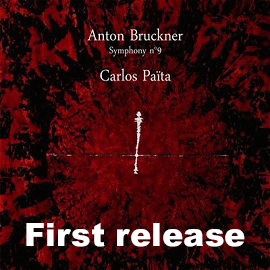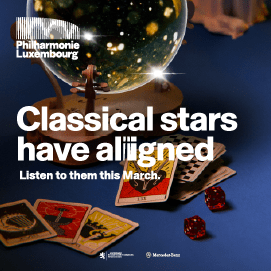Die Frühreife von Camille Saint-Saens wird oft und zu Recht mit der von Mozart verglichen. Mit zweieinhalb Jahren lernte das Wunderkind bereits Klavier spielen, und nur wenig später, mit drei Jahren, improvisierte er kleine Melodien auf seinem Instrument. Mit fünf Jahren beherrschte er die Klaviertechnik perfekt und komponierte sein erstes Stück.
Der glückliche Einfluss von Clémence Saint-Saëns auf ihren Sohn ist allgemein bekannt. Dieser zeigte sein ganzes Leben lang eine große Verbundenheit mit ihr. So flüchtete er nach dem grausamen Verlust seiner beiden Kinder – André, der 1878 im Alter von zwei Jahren aus dem Fenster seiner Wohnung in der Rue Monsieur-le-Prince stürzte, und Jean-François, der nur zwei Monate später im Alter von sieben Monaten starb – zu seiner geliebten Mutter, die ihn immer nachdrücklich förderte.
Als er zehn Jahre alt war, führte ihn sein Lehrer in einem Konzert in der Salle Pleyel öffentlich auf. Der Erfolg des jungen Wunderkindes, das aus dem Gedächtnis Mozart, Bach und Beethoven spielte, war so groß, dass die große Pariser Presse ihm höchst lobende Artikel widmete.
Am Ende eines langen Lebens wurde Saint-Saëns nach seinem Tod von Frankreich mit einem Staatsbegräbnis geehrt und bald gab es in allen großen Städten einen Platz, eine Avenue oder eine Rue Saint-Saëns.
Camille Saint-Saëns war ein produktiver Komponist, bereicherte das Repertoire der Sonaten für Soloinstrumente und Klavier mit Werken, die sich durch Eleganz, technische Meisterschaft und lyrische Schönheit auszeichnen.
Seine Sonaten, angereichert mit einigen kleineren Stücken sind in dieser Box versammelt und in durchaus guten Interpretationen zu hören, die das erwünschte Gleichgewicht zwischen Klassik und Romantik herstellen, sowie durch Virtuosität und Eleganz überzeugen. Es gibt spürbaren Drang in ihnen, ebenso wie elegante, singende Melodien, die oft von Noblesse und Leichtigkeit geprägt sind.
Camille Saint-Saens’ precociousness is often compared to that of Mozart, and rightly so. The child prodigy learned to play the piano at the age of two and a half, and a little later, at the age of three, he was improvising little melodies on his instrument. By the age of five, he had mastered piano technique and composed his first piece.
Clémence Saint-Saëns’ happy influence on her son is well known. He showed great affection for her throughout his life. Thus, after the cruel loss of his two children – André, who fell from the window of his apartment in rue Monsieur-le-Prince in 1878 at the age of two, and Jean-François, who died just two months later at the age of seven – he fled to his beloved mother who always took good care of him.
At the age of ten, his teacher gave him his first public performance in a concert at the Salle Pleyel. The success of the young prodigy, who played Mozart, Bach and Beethoven from memory, was so great that the great Parisian press devoted highly laudatory articles to him.
At the end of a long life, Saint-Saëns was honored by France with a state funeral after his death, and soon there was a Saint-Saëns square, avenue, or rue in every major city.
Camille Saint-Saëns was a prolific composer who enriched the repertoire of sonatas for solo instruments and piano with works characterized by elegance, technical mastery, and lyrical beauty.
His sonatas, enriched by a few smaller pieces, are collected in this box and can be heard in thoroughly good interpretations that achieve the desired balance between classicism and romanticism, as well as convincing virtuosity and elegance. There is a palpable urgency as well as elegant, singing melodies, often characterized by nobility and lightness.






















